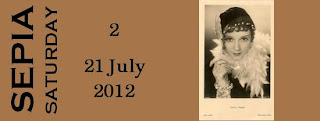An amanuensis* is a person employed to write what another dictates or to copy what has been written by another. Amanuensis Monday is a daily blogging theme which encourages the family historian to transcribe family letters, journals, audiotapes, and other historical artifacts. Not only do the documents contain genealogical information, the words breathe life into kin – some we never met – others we see a time in their life before we knew them. A fuller explanation can be found here.
*In Dutch the word 'amanuensis' has a different meaning. It is someone who assists e.g. a physics teacher in the preparation of physics experiments.
My 3rd great grandfather was Fredericus Muwis. He was born in Kuringen. There he was baptized on September 18, 1760. He died in The Hague on January 18, 1834. Kuringen is situated near Hasselt in todays Belgian Limburg. Fredericus belonged to the Roman Catholic faith.
 |
| Kuringen is situated NW of Hasselt in Belgian Limburg |
He married an Amsterdam girl. Her name was Jacoba Betger (~Amsterdam, October 17, 1766 - The Hague, April 5, 1833). Jacoba was baptized in Amsterdam on said date in an Evangelical Lutheran Church. With the bride and the groom having a different faith, it was decided to, or maybe they were forced to seal the marriage in two different churches.
There is a saying in the Netherlands claiming that when two different beliefs sleep on a single pillow, the couple shall be separated by the devil. In Dutch: Twee geloven op één kussen, daar slaapt de duivel tussen. Despite this popular wisdom the couple never divorced.
Below the marriage registrations as recorded in the marriage registries of the Roman Catholic Church in the Assendelftstraat and the Evangelical Lutheran Kloosterkerk (Monastery Church) both in The Hague on May 3, 1795.
In both records you'll see that the Muwis surname has been changed to Miebis. Later it becomes Miebies which it still is today. I regard Fredericus as the "founding father" of all Miebies name bearers.
 |
Marriage registration in French as recorded in the
Roman Catholic Church, The Hague on May 3, 1795 |
Transcription:
Le 3 maij 1795 après 3
publications de banes faites à l'hotel de ville a la manière du paijs entre
Frederik Miebis et Jacoba Betger sans qu'il se soit trouvé aucun empechement je
soussigné prêtre et missionaire papal de l'eglise paroissiale catholique
Romaine française de La Haije aij reçu leur mutual consentement et leur aij
donné le benediction nuptiale en présence des témoins qui ont signés avec moij.
M:g: van de Roe g:
van de Roe .: Raphael Maguin
Translation in English:
On May 3, 1795, after, in accordance with the country's customs, three
proclamations were made at City Hall between Frederick Miebis and Jacoba
Betger without any objections, I the undersigned priest and papal emissary of
the French Roman Catholic parish church of The Hague, received their mutual
consent and gave them the marriage blessing in the presence of witnesses who
signed with me.
M: g: van de Roe: g: van de Roe .: Raphael Maguin
Translation in Dutch:
Op 3
mei 1795, nadat de proclamaties op 's lands wijze 3 maal op het stadhuis gedaan
zijn tussen Frederik Miebis en Jacoba Betger zonder dat bezwaren zijn gebleken,
heb ik, ondergetekende, priester en pauselijke afgezant van de Franse
Rooms-Katholieke parochiekerk van Den Haag, hun wederzijdse instemming
ontvangen en hen de huwelijkszegen gegeven in aanwezigheid van getuigen die met
mij ondertekend hebben.
M: g: van de Roe: g: van de Roe ': Raphael Maguin
 |
Marriage registration in Dutch as recorded in an unknown church
in The Hague also on May 3, 1795 |
Transcription:
Frederik Miebis, jm, geb. te Cuerigen in het Luiksche met Jacoba Betger, jd, geb. te Amsterdam en beide woonende alhier.
Translation in English:
Frederik Miebis, young man*, born in Kuringen in the area of Luik with Jacoba Betger, young daughter*, born in Amsterdam and both residing here.
* The expressions 'young man' and 'young daughter' meant that these persons were unmarried.
Update July 12, 2016: My thanks go to Nynke van den Hooven. She made several suggestions for an improved transcription and translation of the Roman Catholic marriage document. Additionally she provided a reason why Frederik and Jacoba got married twice.
Until halfway 1795 a marriage in any other church but the Nederduitsch Gereformeerde (NG) church, was not recognized by the administration. So one had to marry in the NG-church in order to be legally married. Whether that situation applied to my ancestors I don't know. Because of Jacoba's also protestant religion their marriage in the NG church may very well have been voluntary.
In stead of marrying in the NG church it was also possible to appear in the local court.










.jpg)











